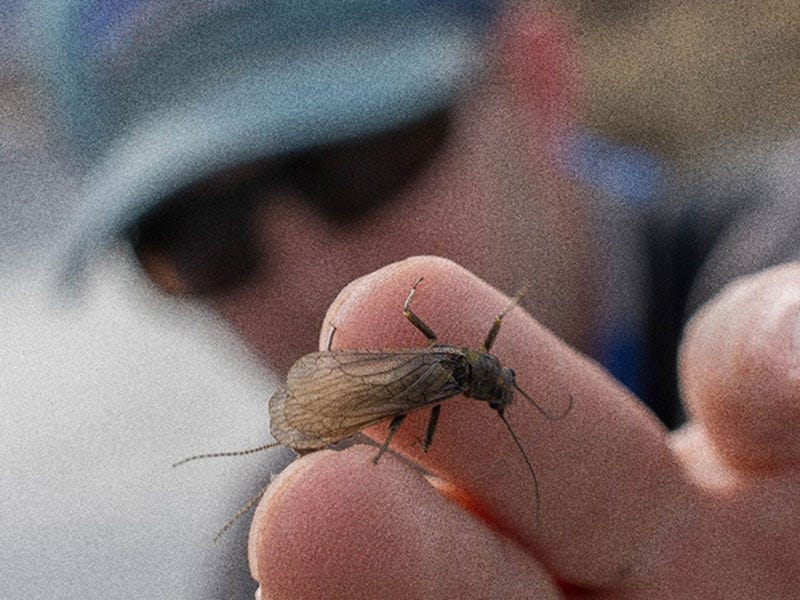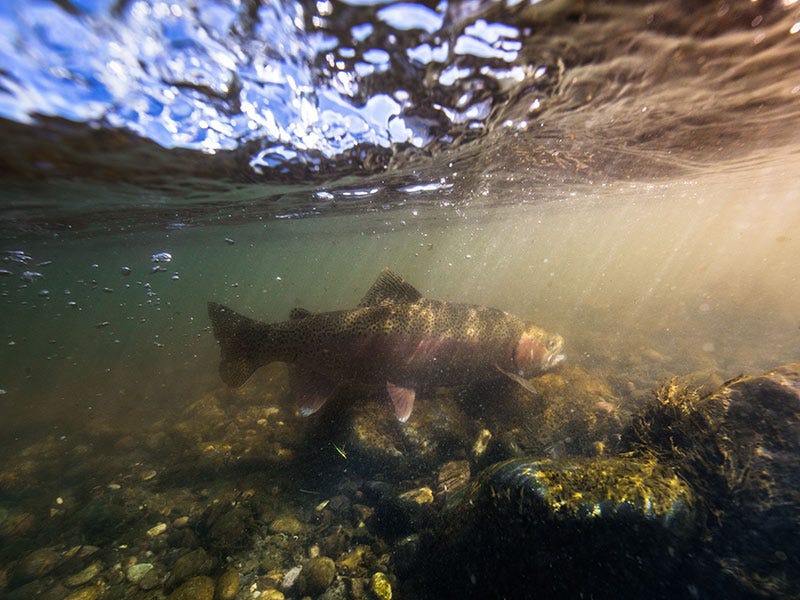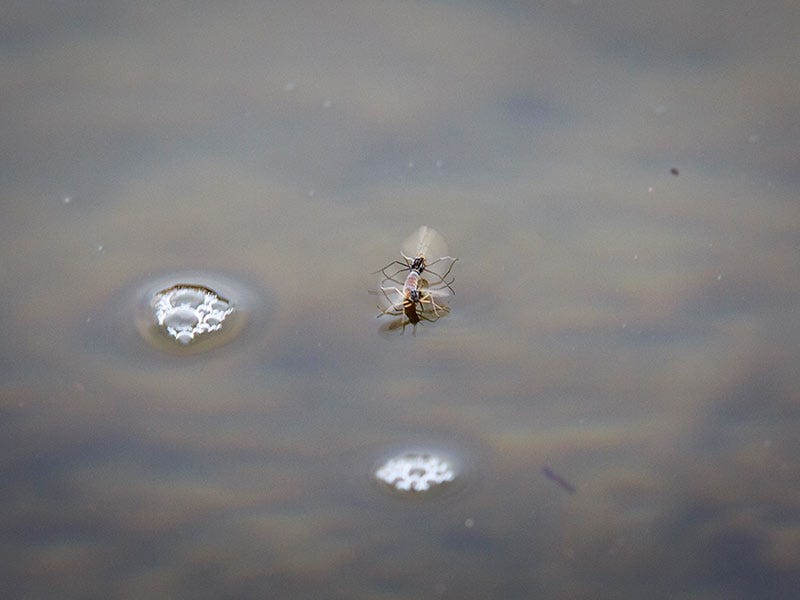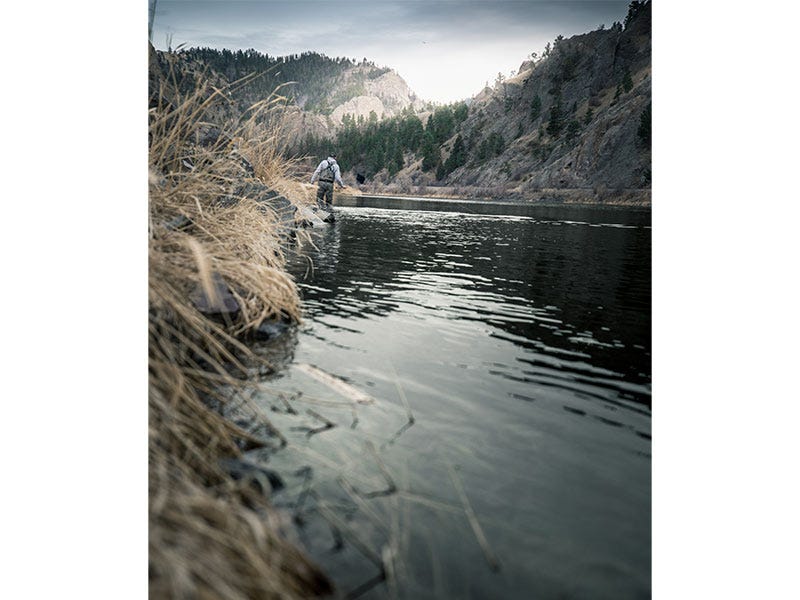The First Hatches of Spring


By the time March and April roll around, I’m ready for some much-needed river time. Hatches this time of year can be sparse, yet they can still provide some stellar fishing if you hit them right. Even if these bugs aren’t “hatching”, they will be crawling or swimming below the surface. As a disclaimer, there are a million and one different bugs that pop off during the spring, and the following are the ones that we observe as fishable hatches.
Thinking about heading out to the Mo? Learn more about early spring fishing here.
Midges
March is a tricky month for fishing. It could still be cold, or it could start getting warm quick. Either way, this is a good pre-runoff window to fish if you find some accessible waters. On most rivers in the Inland Northwest, midges are one of the first bugs that come off in numbers. Patterns such as a zebra midge #18-22, WD-40 #18-22 or a disco midge #18-22 in black, red, and olive will take fish subsurface. On to, use patterns such as, a Griffith’s gnat, a hanging midge, or my personal favorite, B’s hatching midge in #18-20. In your slack eddies and pools where wintering fish gather, fish in the foam or just below the surface film will bring some success. These little guys can hang year round, but hatch sporadically with the ups and downs in winter temperatures.

Baetis
Not far behind midges, baetis are the next hatch to expect in most localities. Many assume baetis to be one singular mayfly species. Many know them as blue wing olives, but they encompass quite a few different taxonomies nationwide. The most important baetids to our areas in the Northwest are little blue wing olives, common blue wing olives, and blue-winged rusty duns. Early on in the spring, bwos will be small.
As the water temperatures increase, we see an increase in sizes. For surface flies, look no further than a parachute bwo or Adams in #14-18 and rusty spinners in #14-18. Subsurface, I normally stick with pheasant tail nymphs, a bead head RS2 in olive/brown with a dun-colored tail, and CDC wing-case tuft, or frenchie nymphs in a few natural colors. Look for these to pop after the water reaches 40 degrees or more.
Skwalas
With the spring thaw we can expect to see some early runoff in some areas. This is prime time to take advantage of the “runoff window.” Sometimes we get lucky and see the early large springflies, better known as skwalas during this window before the snowmelt blows out the rivers. Skwalas are the first of the large stoneflies to come off. Stoneflies, like the skwala, are terrestrial emergers, meaning they crawl out of the water to hatch.
During the hatch, many of these skwala nymphs won’t make it out of the water, getting washed downstream into the belly of trout. Nymphing off-colored water leading up to, or during a hatch, can produce. Pat’s rubber legs #10-12 will do the trick. 20-incher stones #10-12 will grab the attention of hungry trout as well. On top, a lot of foam bugs will get attention, like a chubby chernobyl in olive or black, but my favorite is a dark olive stimulator style skwala with rubber legs in size 10-12. Another notable skwala pattern is the bullethead skwala #10-12.

Western March Browns
Western march browns are slightly bigger bugs, and they hatch sporadically throughout the day. If the skwalas precede the browns, the fish are already “looking up”, making for some great fishing opportunities for day-long outings. Their hatching behavior begins around water temperatures that reach the mid 40-degree mark. So, remember this, some areas will not see this hatch until April and some as late as May.
Heading out for the first hatch? Check out your local fishing report here.
These bugs take a while to hatch at the surface resulting in a lot of cripples and prime targets for trout. Using flies such as a Western March brown #12-16 or Flick’s March brown #12-16 will give you some fun takes on top during this hatch. A big fat parachute Adams #12-16 will be the simplest solution. Crippled flies will take fish on top too. A #12-14 March Brown Cripple will do well. A Hare’s Ear #12-14 or a 20-incher #12-14 match the nymphs that are drifting helplessly through the current.

As spring progresses, we generally hit runoff season, which brings some rivers to the point that we can’t fish them. Generally, we’re forced to take a quick break until we break into summer. I’ll patiently await the salmonfly hatch and fish some lakes on nicer days. This is when you can watch the flows and weather, and find gaps between hard runoff cycles where the water might clear up slightly for a day or two. As the forest roads open up, explore a bit. You might just find the next hidden gem that will get you through runoff season.
